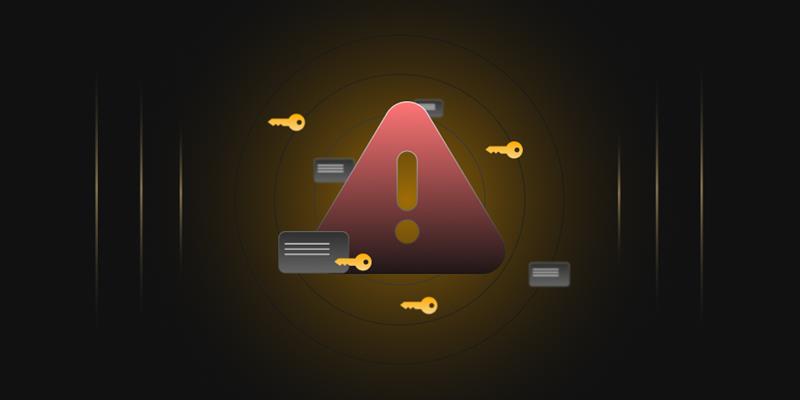- Understanding Certificate Renewal and Revocation
- Certificate Renewal Process
- Certificate Revocation Process
- Best Practices for Certificate Renewal and Revocation
- Monitoring Certificate Renewal and Revocation Activities
- Certificate Renewal and Revocation Troubleshooting
- Encryption Consulting aids in Microsoft PKI certificate
- Conclusion
Public Key Infrastructure (PKI) is critical to modern cybersecurity, enabling secure communication and data encryption. Microsoft’s PKI offers robust certificate management, ensuring the validity and integrity of digital certificates issued by a Certificate Authority (CA). In this comprehensive guide, we will delve into renewing and revoking certificates in Microsoft PKI. We will explore how to manually renew computer certificates, renew expired certificates in Windows Server, and revoke certificates using PowerShell, providing step-by-step instructions to ensure a smooth certificate management process.
Understanding Certificate Renewal and Revocation
Certificate renewal and revocation are essential processes in PKI to ensure digital certificates’ continued security and validity. Certificate renewal involves extending the validity period of an expiring certificate, preventing disruptions in secure communications and services. On the other hand, certificate revocation is the process of invalidating a certificate before its natural expiration due to security concerns, such as a compromised private key or a change in the certificate holder’s status.
Proper certificate renewal and revocation practices are crucial for maintaining a trustworthy PKI infrastructure, preventing potential security risks, and ensuring seamless operations within an organization’s network.
Certificate Renewal Process
The certificate renewal process is crucial to managing a secure and reliable Public Key Infrastructure (PKI). Certificates are essential for securing communications, authenticating users and devices, and ensuring the integrity of data transmission. As certificates have a defined validity period, they must be renewed before they expire to maintain their trusted status and prevent service disruptions.
The certificate renewal process involves several key steps:
-
Monitoring Certificate Expiry
Administrators must regularly monitor the validity periods of certificates to identify those approaching expiration. This can be achieved through manual tracking, automated monitoring systems, or setting up certificate expiry alerts.
-
Initiating Renewal Requests
Once an administrator identifies certificates nearing expiration, they initiate the renewal process. Certificates can be renewed manually or automatically, depending on the organization’s PKI setup.
-
Certificate Authority Validation
When renewing certificates manually, administrators typically submit certificate renewal requests to the Certificate Authority (CA) responsible for issuing the original certificate. The CA validates the request and verifies the identity of the requester.
-
Generating New Cryptographic Keys
For enhanced security, administrators may opt to generate new cryptographic keys during the renewal process. This process is known as key pair renewal and helps protect against potential key compromises.
-
Certificate Revocation Checking
The CA checks if the renewed certificate has been revoked during the renewal process. If the certificate is found to be revoked, the renewal request may be denied.
-
Issuing Renewed Certificates
Once the renewal request is approved, the CA issues a new certificate with an updated validity period and, if applicable, new cryptographic keys.
-
Installing Renewed Certificates
The renewed certificate must be installed on the relevant servers, devices, or endpoints to ensure continued secure communication and authentication.
-
Updating Certificate Stores
Administrators must update certificate stores across the network to reflect the new certificate’s presence and expiration date.
-
Testing Renewed Certificates
After installation, it is essential to test the renewed certificates thoroughly to verify that they function correctly and that services relying on them operate without any issues.
-
Certificate Lifecycle Management
Organizations must maintain accurate records of certificate renewals, including renewal dates and key pair changes, for auditing, compliance, and security purposes.
Manual Renewal of Computer Certificates
Renewing computer certificates is critical for ensuring continuous secure communication within an organization’s network. The manual process involves several steps:
-
Checking Certificate Expiry
Administrators must promptly identify certificates approaching their expiration dates to initiate the renewal process.
-
Creating a Certificate Signing Request (CSR)
A new CSR is generated for the certificate that needs to be renewed. The CSR contains the certificate’s public key and relevant information about the organization.
-
Submitting the CSR to the Certificate Authority
The CSR is submitted to the CA for verification and re-issuance of the certificate. The CA validates the organization’s identity before issuing the renewed certificate.
-
Installing the Renewed Certificate
After receiving the renewed certificate from the CA, it is installed on the server or device to replace the expired certificate, ensuring uninterrupted, secure communication.
Renewing Certificates via Certificate Autoenrollment
- Certificate autoenrollment is a feature in Active Directory environments that automates the process of certificate issuance and renewal.
- It simplifies certificate management for large-scale deployments by automatically enrolling users and devices for certificates based on predefined policies.
- Administrators can configure autoenrollment settings using Group Policy to specify which certificate templates are eligible for autoenrollment.
- Autoenrollment reduces the burden on IT staff, ensures certificates are always up-to-date, and enhances overall security by promoting regular renewal.
- Organizations can combine autoenrollment with Certificate Template permission settings to automatically control who receives which types of certificates.
Renewing Expired Certificates in Windows CA
Windows Certificate Authority (CA) offers multiple methods for renewing expired certificates:
-
Renewing via Certificate MMC Snap-in
Administrators can use the Certificate MMC snap-in to view and renew expired certificates. This method offers a user-friendly graphical interface for managing certificates.
-
Renewing via Command Line (certutil)
The “certutil” command-line utility allows administrators to perform certificate management tasks, including renewal, using command-line instructions.
-
Using PowerShell to Renew Certificates
PowerShell scripts can be utilized to automate the certificate renewal process, making it efficient for organizations with many certificates.
The Importance of Timely Certificate Renewal
- Timely certificate renewal prevents service disruptions by ensuring certificates remain valid and trusted. Expired certificates can lead to errors and interruptions in various applications and services.
- Certificates play an essential role in ensuring the security of data transmission and authentication. Renewing certificates before expiration helps maintain a robust security infrastructure, protecting sensitive information from unauthorized access.
- Expired certificates can leave systems vulnerable to potential attacks, including man-in-the-middle attacks and data interception. Regular renewal ensures that cryptographic keys are up to date, reducing the risk of compromise.
- Many industries and regulatory standards require the use of valid and up-to-date certificates.
- Timely renewal helps organizations comply with security and privacy regulations.
- Expiry warnings or security alerts related to expired certificates can undermine customer trust.
- Timely renewal of certificates builds confidence in an organization’s online presence and services.
- By adhering to scheduled certificate renewal, organizations can avoid the urgency of renewing certificates on short notice, preventing potential mistakes or oversights.
- Expired certificates can lead to downtime and business disruption. Timely renewal reduces the need for emergency troubleshooting, minimizing the impact on productivity and revenue.
Setting up Certificate Expiry Alerts
- Implementing certificate expiry alerts enables proactive monitoring of certificate validity, ensuring administrators are informed well in advance of expiration dates.
- Alerts provide timely reminders to renew certificates, helping administrators avoid unexpected expiry and potential service disruptions.
- Configure alert thresholds based on the organization’s risk tolerance and renewal policies. Set alerts to trigger at specific time intervals before certificates expire.
- Integrate certificate expiry alerts with event logging systems, enabling centralized monitoring and easy access to alert history.
- Send email notifications to designated administrators or teams when certificates are approaching expiration, facilitating swift action.
- Set up escalation procedures for critical alerts, ensuring that unresolved certificate expiry issues receive appropriate attention and resolution.
- Verify that the alerting system functions correctly by conducting regular testing, simulating certificate expirations, and validating that alerts are triggered as expected.
- Use event correlation tools to analyze and aggregate certificate expiry alerts across the network, generating reports for compliance and auditing purposes.
Manual Renewal Vs. Automatic Renewal
Manual Renewal:
- Manual renewal provides greater control over the certificate renewal process, allowing administrators to review and verify each renewal request individually.
- It is suitable for organizations with limited certificates, where the administrative workload is manageable.
- Administrators can validate certificate details, such as the subject name and key usage, before approving the renewal, ensuring accuracy.
Automatic Renewal:
- Automatic renewal streamlines the certificate renewal process by eliminating the need for manual intervention in most cases.
- It is well-suited for large-scale deployments with numerous certificates, reducing administrative burden and potential human errors.
- Certificates are automatically renewed before expiration dates, ensuring uninterrupted services and enhanced security.
Certificate Revocation Process
Certificate revocation is a crucial aspect of Public Key Infrastructure (PKI) management, aimed at invalidating a previously issued certificate before its scheduled expiration date. The certificate revocation process is vital to address security incidents, compromised private keys, or changes in the certificate holder’s status.
Revoked certificates are removed from the list of trusted credentials, preventing unauthorized access and ensuring the overall integrity of the PKI ecosystem. Implementing certificate revocation lists (CRLs) and utilizing the Online Certificate Status Protocol (OCSP) are essential components of the certificate revocation process.
Reasons for Certificate Revocation
-
Compromised Private Key
Certificates should be invalidated in cases where there is a belief or proof that the private key linked to the certificate has been jeopardized. This prevents unauthorized entities from impersonating the certificate holder.
-
Employee Termination
When employees leave an organization, their digital certificates should be revoked to prevent access to sensitive resources and data.
-
Device Loss or Theft
Certificates associated with lost or stolen devices should be revoked to prevent potential misuse of the certificates and protect data security.
-
Certificate Misuse
If a certificate is used inappropriately or outside its intended scope, it should be revoked to prevent unauthorized access and maintain the integrity of the PKI.
-
Certificate Expiration
Certificates may be revoked if they expire without renewal, as expired certificates are no longer considered trustworthy for secure communication.
-
Non-Compliance with Policies
Revocation may be necessary when a certificate holder fails to comply with an organization’s security policies or industry regulations.
-
Organizational Changes
Changes in an organization’s legal name, structure, or status may require certificate revocation and re-issuance to align with updated identity information.
Certificate Revocation and Its Implications
- The main goal of certificate revocation is to maintain the trust and security of the Public Key Infrastructure (PKI) ecosystem.
- Revoking certificates promptly helps prevent unauthorized access and potential misuse of compromised certificates.
- Clients and relying parties, such as web browsers or applications, perform revocation checks to verify the current status of a certificate before trusting it.
- Certificate Revocation Lists (CRLs) and Online Certificate Status Protocol (OCSP) are mechanisms used by clients to check the revocation status of certificates.
- If you don’t quickly cancel certificates that have been hacked, it can cause security problems and let unauthorized people access important information.
- Regularly monitoring and managing certificate revocation events is crucial to maintaining a secure and trusted PKI environment.
How to perform certificate revocation
To cancel a certificate, you need to pick someone as a certificate manager. This is done by giving a user or a group the permission to Issue and Manage Certificates at the issuing CA (Certificate Authority). The CA Administrator, who is a user with the Manage CA permissions, is responsible for this permission setup. Follow these steps to make sure the right permissions are set:
- Open the Certification Authority console from Administrative Tools.
- Right-click on CAName (where CAName is the CA’s name), and choose Properties in the menu.
- In the CAName Properties window, go to the Security tab. Make sure the user’s account or a group they are part of has the Issue and Manage Certificates permission.
With required permissions, follow these steps to revoke a certificate.
- Open the Certification Authority console from Administrative Tools.
- Expand CAName in the console tree and click on Issued Certificates.
- In the details section, find the certificate you want to revoke. Right-click on it, go to All Tasks and choose Revoke Certificate.
- Pick the appropriate reason code from the options in the Certificate Revocation window and click Yes.
- Check if the recently revoked certificate is now visible in the revoked certificates section.
Implementing Certificate Revocation Lists (CRLs)
- Certificate Revocation Lists (CRLs) are digitally signed lists issued by the Certificate Authority (CA) that contain details of revoked certificates.
- CRLs are distributed to clients, enabling them to check the revocation status of certificates before trusting them for secure communication.
- CRLs include information such as the serial numbers of revoked certificates, the date of revocation, and the reason for revocation.
- Organizations must ensure that CRLs are generated and published regularly, keeping them updated with the latest revocation information.
- Administrators should consider the CRL distribution frequency based on the size of the certificate user base and the rate of certificate revocation events.
Configuring CRL Distribution Points
- CRL Distribution Points (CDPs) specify the locations where clients can obtain the latest CRLs for certificate revocation checks.
- Administrators must configure CDPs in certificates during issuance to inform clients about the CRL retrieval points.
- CDPs can be set up using various methods, including HTTP, LDAP, and file-based distribution, depending on the organization’s infrastructure and requirements.
- It is crucial to design the CDP locations strategically, considering factors such as network accessibility and load balancing to ensure efficient CRL retrieval.
The Role of Online Certificate Status Protocol (OCSP)
- Online Certificate Status Protocol (OCSP) is an alternative to CRLs for checking the revocation status of certificates in real time.
- OCSP enables clients to query the CA or OCSP responders directly to obtain the current revocation status of a specific certificate.
- OCSP improves the efficiency of certificate revocation checks, as clients receive immediate responses without downloading and processing entire CRLs.
- To support OCSP, organizations must deploy OCSP responders that can handle client queries and provide accurate revocation information in real time.
- Implementing OCSP stapling, where the server includes a signed OCSP response in its TLS handshake, can further enhance performance and privacy during OCSP checks.
Best Practices for Certificate Renewal and Revocation
This section will offer essential best practices to ensure effective certificate renewal and revocation processes:
-
Proper Planning
Organizations should have a clear certificate lifecycle management plan in place, including tracking certificate expiry dates and initiating renewals in advance.
-
Certificate Backup
Administrators must regularly back up certificates and private keys to prevent data loss in case of hardware failures or unexpected events.
-
Regular Auditing
Regularly auditing certificates and their usage helps identify potential security vulnerabilities and ensures compliance with organizational policies.
-
Maintaining an Updated Certificate Revocation List (CRL)
Ensuring the CRL is regularly updated with revoked certificates helps prevent the use of compromised certificates and maintains the integrity of the PKI infrastructure.
By using these smart ways, companies can make their certificate management better, improve security, and keep a trustworthy PKI system.
Monitoring Certificate Renewal and Revocation Activities
Monitoring certificate renewal and revocation activities is critical to maintaining a secure and reliable Public Key Infrastructure (PKI). Effective monitoring ensures that certificates are renewed on time, preventing service disruptions and promptly invalidating revoked certificates to prevent potential security risks.
-
Log Management
Implement centralized log management to collect and analyze certificate-related events, simplifying the monitoring process.
-
Event Triggers
Set up event triggers to notify administrators of critical events, such as certificate renewals nearing expiration or unexpected revocations.
-
Certificate Management Solutions
Utilize specialized certificate management solutions with built-in monitoring features and detailed reports.
-
Compliance Auditing
Perform regular compliance audits to ensure certificate renewal and revocation procedures align with industry standards and internal policies.
-
Monitoring Certificate Authority Health
Monitor the health and performance of the Certificate Authority to identify potential issues that may impact certificate management.
-
Real-time Notifications
Configure real-time notifications via email or SMS for immediate awareness of certificate renewal and revocation events.
-
Historical Tracking
Maintain historical records of certificate activities to identify patterns, potential anomalies, and areas for improvement.
Certificate Renewal and Revocation Troubleshooting
Certificate renewal and revocation troubleshooting is crucial to ensure the seamless functioning of a Public Key Infrastructure (PKI) and maintain the security of digital certificates. When issues arise during certificate renewal or revocation, prompt and effective troubleshooting is necessary to identify and resolve the root cause. To troubleshoot certificate renewal and revocation issues, administrators can follow these key steps:
-
Certificate Chain Validation
Verify the certificate chain to ensure all certificates in the chain are valid and properly linked.
-
Revocation Check Failure
Troubleshoot issues related to the failure of clients to perform revocation checks, such as network connectivity problems or CRL retrieval failures.
-
Private Key Backup
Ensure that the private keys associated with certificates are securely backed up to prevent data loss during renewal or revocation.
-
Certificate Template Permissions
Verify that users and devices have the necessary permissions to request certificate renewals and perform revocations.
-
OCSP Responder Availability
Ensure that the OCSP responder is accessible and responsive to clients’ requests for real-time certificate status checks.
-
Certificate Template Configuration
Check the certificate template configurations for correct validity periods and renewal settings to avoid unexpected issues during the renewal process.
-
Certificate Revocation List Updates
Troubleshoot delays or errors in updating and distributing Certificate Revocation Lists to clients to ensure timely revocation checks.
Encryption Consulting aids in Microsoft PKI certificate
Encryption Consulting’s CertSecure is a cutting-edge solution designed to streamline and simplify the management of digital certificates throughout their lifecycle.
Key Features and Benefits
-
Centralized Management
CertSecure offers a centralized platform for managing certificates across your organization. From issuance and deployment to renewal and revocation, all stages of the certificate lifecycle are seamlessly managed through a single interface.
-
Automation and Orchestration
Manual certificate management can lead to oversight, errors, and security vulnerabilities. CertSecure’s automation capabilities ensure that certificates are issued, renewed, and revoked automatically according to predefined policies, reducing the risk of lapses in security due to expired certificates.
-
Policy Enforcement
Implementing consistent security policies across diverse applications and services can be daunting. CertSecure enables you to define and enforce certificate policies across the organization, ensuring compliance and standardization.
-
Real-time Monitoring and Alerts
Stay informed about the health and status of your certificates through real-time monitoring and alerts. CertSecure notifies you about impending certificate expirations, potential vulnerabilities, and other critical events, allowing you to take proactive actions.
-
Integration and Compatibility
CertSecure integrates with your existing infrastructure, including Microsoft PKI, Active Directory, and other certificate authorities. This ensures that your current investments are leveraged while enhancing certificate management capabilities.
-
Enhanced Security
By automating and centralizing certificate management, CertSecure reduces the risk of human errors that can lead to security breaches. With timely certificate renewals and revocations, your organization maintains a robust security posture.
-
Scalability and Flexibility
Whether your organization is small or large, CertSecure scales to meet your needs. It accommodates the growing demands of certificate management in an increasingly digital world.
Conclusion
Public Key Infrastructure (PKI) is pivotal for modern cybersecurity, ensuring secure communication and data encryption. Microsoft’s PKI framework manages digital certificates, upholding certificate authenticity and integrity. Certificate renewal and revocation are keys to a secure infrastructure. Renewal maintains secure communication and prevents risks from expired certificates. Revocation invalidates certificates due to security concerns like compromised keys or status changes.
When it’s time to renew certificates, there are two ways: manual and automatic. Manual is good for small setups, while automatic works better for big ones. If you use Active Directory, it can help with automatic renewal. If a certificate needs to be canceled, it’s for security reasons. Acting quickly stops unauthorized people from getting in. Admins should understand why, like if keys are stolen or employees leave.
- Understanding Certificate Renewal and Revocation
- Certificate Renewal Process
- Certificate Revocation Process
- Best Practices for Certificate Renewal and Revocation
- Monitoring Certificate Renewal and Revocation Activities
- Certificate Renewal and Revocation Troubleshooting
- Encryption Consulting aids in Microsoft PKI certificate
- Conclusion




